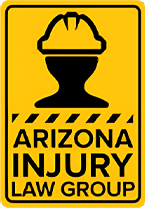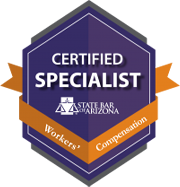Danger In The Coffee Shop

Though they were a rarity only a few decades ago, it is hard to imagine a world without so-called “specialty” coffee stores. From its single location in 1971, industry leader Starbucks has grown from a single Seattle store to a corporate giant with nearly 30,000 company-owned and licensed locations worldwide. According to a National Coffee Association of America survey, specialty coffee purveyors represent nearly 50% of the total U.S. coffee market and employ more than 250,000 workers (Starbucks alone has an estimated 157,000).
Perhaps those who regularly tend to coffee roasters or who labor behind espresso machines making pricey coffee drinks for grumpy and demanding Arizonians already know it, but some less subjective evidence has begun to emerge that employment in the coffee industry can be hazardous to your health.
BARISTAS’ OCCUPATIONAL HAZARDS

The U.S. Occupational Safety and Health Administration recognizes a long list of hazards associated with food service employment. “Garden variety” injuries such as burns, cuts, and falls are common among baristas, whose work requires regularly moving about in a confined space and producing and serving scalding hot beverages in a fast-paced, pressure-filled environment.
As we have discussed elsewhere in our blog, however, an injury need not be the result of an isolated and sudden occurrence in order to be considered work-related under Arizona’s workers’ compensation law. Baristas are required to lift, bend and manipulate espresso machines, blenders, and other equipment repeatedly during a work shift. Although associated elbow, wrist, back and other repetitive stress-related ailments may take weeks or months to manifest themselves, they are nevertheless squarely within the statute’s coverage. Standing for extended periods can also cause or aggravate foot ailments.
As awareness of the repetitive motion injury risk has grown, some coffee shop owners have responded by installing ergonomically designed workspaces and fatigue-relieving floor mats. Other responses include strict enforcement of lunch and rest break schedules and requiring each employee to spend a third or more of every shift engaged in less physically demanding duties, such as operating the cash register.
A less obvious potential danger to baristas is hearing loss. A Barista Guild of America article cites studies which conclude that the typical specialty coffee shop noise level is between 71 and 83 decibels, below the threshold (90 decibels) at which the Occupational Safety and Health Administration requires hearing protection. It also notes, however, that periodic bursts of noise from grinders, blenders and other equipment can cause levels to temporarily exceed the 90 decibel OSHA threshold.
OCCUPATIONAL ILLNESS
Most employees who roast coffee beans have either never heard of diacetyl or, if they have, associate it with the artificial butter flavoring used in popcorn production. However, diacetyl vapor, excessive exposure to which has been recognized as potentially harmful, is also released into the air as a natural byproduct of coffee roasting. The risk of excessive exposure can be mitigated, but only if the roasting facility has a properly designed system for venting diacetyl and other potentially harmful vapors into the outside atmosphere.
Get Help Today
Call Immediately For A Free, No Obligation Consultation And Let Us Help You Put Your Life Back On Track. Let Us Help You
Regain Normalcy And Stability Again. We Want To Help You Get The Benefits You Need And Deserve!


